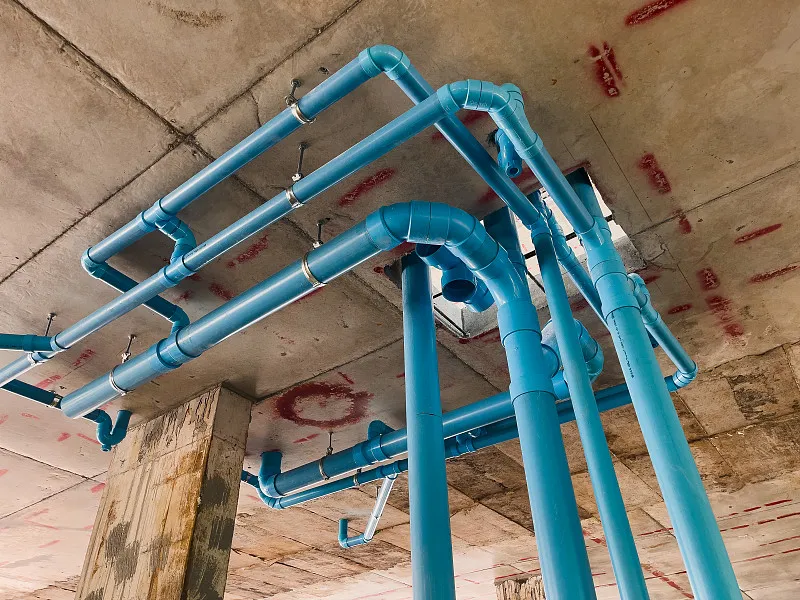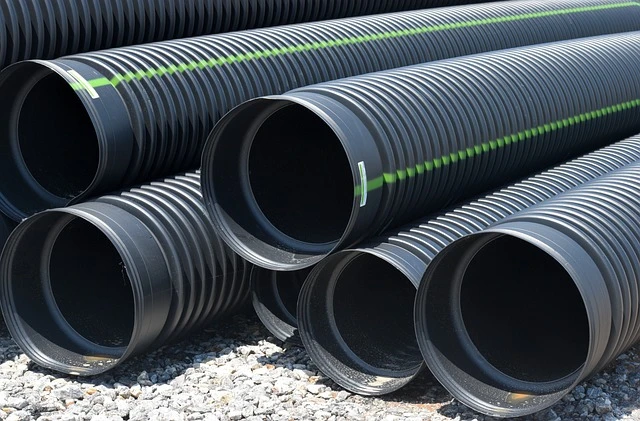Introduce PPR Pipe
PPR Pipe, known for their durability, chemical resistance, and affordability, have become a common choice in plumbing and industrial applications. When planning a project that involves PPR piping, knowing the weight of the pipes is essential for various reasons. Whether you’re managing transportation logistics, estimating installation costs, or ensuring structural integrity, understanding PPR pipe weight can make all the difference. This article will guide you through the significance of PPR pipe weight, how to calculate it, and the factors that influence it.
What is PPR Pipe?
PPR (Polypropylene Random Copolymer) pipe is a versatile plastic pipe used in a variety of plumbing systems. It is commonly used for transporting both hot and cold water in residential, commercial, and industrial settings. PPR pipes offer several advantages, including resistance to corrosion, scale buildup, and high temperatures, making them an ideal choice for long-term plumbing systems.
Importance of Knowing PPR Pipe Weight
When dealing with PPR pipes, it’s important to know how much each pipe weighs. This is crucial for several reasons:
- Transport and Handling: The weight of the pipes will affect transportation costs and ease of handling during installation. Heavier pipes might require special lifting equipment or more manpower to move.
- Structural Load Calculations: In some applications, particularly in industrial or commercial systems, understanding the load of a piping system is necessary for ensuring that the structure can bear the weight of the installed pipes.
- Cost Implications: The weight of the PPR pipe directly impacts material cost. Heavier pipes might have a higher production cost, while also increasing transportation costs.
PPR Pipe Weight Calculation Formula
Calculating the weight of PPR pipes requires some basic knowledge of physics and material density. Here’s a simplified explanation:
Explanation of Key Variables:
- Density of PPR Material: The average density of PPR material is around 0.90 to 0.95 g/cm³.
- Pipe Dimensions: The diameter, thickness, and length of the pipe will all affect the weight. The thicker the pipe wall and the larger the diameter, the heavier the pipe will be.
Metric Formula:
To calculate the weight of a PPR pipe in metric units, use the following formula:Weight=(Outer Volume−Inner Volume)×Density\text{Weight} = \left( \text{Outer Volume} – \text{Inner Volume} \right) \times \text{Density}Weight=(Outer Volume−Inner Volume)×Density
Where:
- Outer Volume = π × (Outer Radius)² × Length
- Inner Volume = π × (Inner Radius)² × Length
Imperial Formula:
For imperial measurements, the same formula applies but with the appropriate units:Weight (lbs)=(Outer Volume (in³)−Inner Volume (in³))×Density (lbs/in³)\text{Weight (lbs)} = \left( \text{Outer Volume (in³)} – \text{Inner Volume (in³)} \right) \times \text{Density (lbs/in³)}Weight (lbs)=(Outer Volume (in³)−Inner Volume (in³))×Density (lbs/in³)
- The typical density of PPR is around 0.032 lb/in³.
How to Use a PPR Pipe Weight Calculator
Step-by-Step Guide for Metric Calculation:
- Obtain the Measurements: Measure the outer and inner diameters of the PPR pipe, as well as the length.
- Plug in the Numbers: Use the metric formula, inserting the measurements you obtained for the outer and inner radius, as well as the length of the pipe.
- Multiply by the Material Density: Multiply the result from step 2 by the density of PPR (usually 0.90-0.95 g/cm³).
Step-by-Step Guide for Imperial Calculation:
- Measure the Pipe: Measure the outer and inner diameters in inches, and the pipe length in feet.
- Apply the Imperial Formula: Use the imperial formula to calculate the pipe’s weight, converting all measurements to inches and feet.
- Check the Result: Make sure the result gives you the weight in pounds (lbs).
Using Online Calculators vs Manual Methods:
While it’s possible to manually calculate the weight of PPR pipes using the above formulas, online calculators can simplify the process. Many online tools allow you to input pipe dimensions, and they’ll automatically calculate the weight in either imperial or metric units.

PPR Pipe Weight by Size
PPR pipes come in various sizes, each with its specific weight. Here’s a quick reference to give you an idea of the weight of commonly used PPR pipe sizes:
- 20mm (3/4″) PPR Pipe: Typically weighs around 0.15 kg/m (0.33 lbs/ft).
- 25mm (1″) PPR Pipe: Typically weighs around 0.22 kg/m (0.48 lbs/ft).
- 32mm (1.25″) PPR Pipe: Typically weighs around 0.35 kg/m (0.76 lbs/ft).
- 50mm (2″) PPR Pipe: Typically weighs around 0.58 kg/m (1.28 lbs/ft).
- 75mm (3″) PPR Pipe: Typically weighs around 1.05 kg/m (2.31 lbs/ft).
- 110mm (4″) PPR Pipe: Typically weighs around 1.90 kg/m (4.15 lbs/ft).
Larger diameter pipes are generally heavier due to their increased volume and thickness.
Factors Affecting PPR Pipe Weight
Several factors influence the final weight of a PPR pipe:
- Material Density and Composition: Variations in the raw material used for manufacturing PPR pipes can slightly change the weight. Some manufacturers use higher-quality, denser compounds for added strength, which may increase the pipe weight.
- Pipe Diameter and Thickness: As mentioned earlier, larger and thicker pipes will naturally weigh more. Pipe thickness (wall thickness) is an important consideration for pressure resistance and overall pipe strength.
- Pipe Length: Longer pipes will obviously weigh more than shorter pipes, though the weight per unit length is constant.
Applications of PPR Pipe Weight Calculation
Understanding the weight of PPR pipes is crucial in several scenarios:
- In Plumbing Systems: Accurate weight estimates help to determine how much labor is required for installation, as well as the type of tools and equipment needed.
- In Industrial and Commercial Installations: In large-scale industrial projects, weight calculations help assess the structural integrity and cost-efficiency of the system.
- In Transportation and Logistics: Knowing the weight of pipes in advance helps in estimating transport costs and ensuring proper loading and handling of pipes during shipment.
Benefits of Accurately Calculating PPR Pipes Weight
- More Efficient Transport: By knowing the weight of the pipes, you can optimize transportation, reducing costs and ensuring that appropriate equipment is used.
- Easier Installation: Estimating the weight ahead of time helps in determining the required manpower and tools, streamlining the installation process.
- Cost Savings: By accurately calculating the weight, you can optimize material costs, labor costs, and handling requirements, ensuring a more cost-effective project.
Common Challenges in PPR Pipes Weight Calculation
- Variations in Pipe Manufacturing Standards: Different manufacturers might produce pipes with slightly different wall thicknesses or diameters, which can affect weight calculations.
- Difficulty in Estimating Pipe Weight for Non-Standard Pipes: For pipes that are not a standard size or shape, calculating the weight might require custom formulas or approximations.
Conclusion
Understanding how to calculate the weight of PPR pipes is crucial for efficient project planning, logistics, and cost management. Whether using a manual formula or an online weight calculator, having accurate weight data allows you to optimize material handling, transportation, and installation processes. With the added benefit of cost savings and streamlined operations, it’s clear that PPR pipe weight calculation is a key factor in ensuring the success of any piping project.
FAQs
- How do you calculate the weight of PPR pipes manually? You can calculate the weight of PPR pipes by using the formula for the pipe’s volume, subtracting the inner volume from the outer volume, and multiplying by the material’s density.
- What factors affect the weight of PPR pipes? The pipe’s diameter, thickness, length, and the density of the material all influence the weight of PPR pipes.
- Can PPR pipes weight calculators be used for all types of pipes? Yes, as long as the pipe is made from PPR material, weight calculators can be used. For non-standard sizes, custom formulas might be required.
- Why is it important to consider pipe weight in construction projects? Considering pipe weight helps with logistics, transportation, installation, and cost estimations, ensuring smooth project execution.
- Do weight calculators account for pipe length in the calculation? Yes, pipe length is a key factor in weight calculations, as longer pipes will naturally weigh more.


















